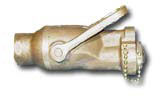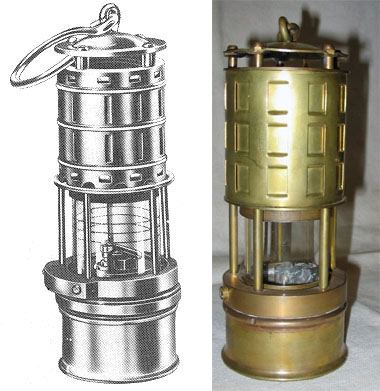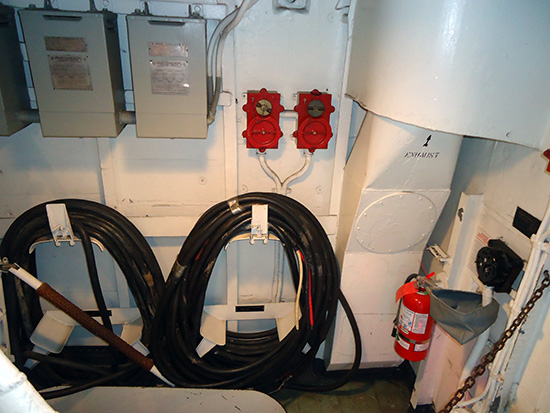Casualty power supply systems. In repairing damage to
electrical circuits it may be necessary to run portable
cables through flooded or around damaged areas. For this
purpose casualty power supply systems are now provided
in most vessels for ship's power circuits, and in
electric-drive vessels for the main A.C. propulsion
system as well as D.C. power circuits. Frequent drills
should be held in hooking up casualty power cable. They
should be as realistic as possible and electrical
equipment should be operated by casualty power when
practicable. As an example of a typical casualty power
system, the installation of a 2,100 ton DD will be
described briefly. Power from both main switchboards and
the emergency Diesel switchboard is led vertically from
riser terminals through permanent riser cables to the
main deck and radio central in the forward
superstructure. By means of portable cables conveniently
stowed in racks, power is distributed forward from the
main deck risers to 40 mm. gun-mount panels and
submersible pump outlets, and aft to 40 mm. gun-mount
panels and the steering gear. Portable cables are
plugged into riser terminals and bulkhead terminals.
Installations in larger vessels are similar, but more
elaborate. 333 On D.C. circuits casualty power
bulkhead terminals are in pairs, one marked red for
positive leads and the other green for negative leads.
Do not make the mistake of connecting the two main
cables to one terminal even though it does have two
binding posts, because they are both either positive or
negative, and the result will be a short circuit. The
upper binding posts are for passing current from one
compartment to another; the lower terminals for
operating lights and tools within the compartment. On
A.C. circuits, there is only one terminal per bulkhead.
Each terminal has sets of slots marked A, B and C to
allow for 3-phase current. Take care to connect the
phases properly or casualties will result. The face of
the connector should be divided into three sectors:
A-sector red, B-sector white, and C-sector black. Jumper
cables should be marked as follows: D.C. positive leads
with red bands, negative with green; A.C. cables (the
three individual conductors) with red, white and black
bands for phases A, B and C. Thus the cables are marked
to correspond with the terminals, which facilitate
hooking up properly and speedily. 39-13. Smoke in
firerooms and engine rooms. If there are fires near the
intakes for the forced draft and ventilation blowers
supplying firerooms and engine rooms smoke will be drawn
into these spaces. Unless equipment is provided for
operating personnel they eventually will be forced to
abandon the spaces. In ships having air-encased boilers,
no smoke will be drawn into the firerooms by forced
draft blowers, but it will enter through the ventilation
system. Ordinary gas masks will help, but are not
sufficient. Air-line masks, supplied by compressed air
are recommended. Rescue breathing apparatus, if
available in sufficient quantities, can also be used.
39-14. Fires. In some cases, heat from fires above the
engineering spaces in adjacent compartments,
particularly if the ventilation supply is knocked out by
structural or electrical damage, will make the firerooms
or machinery spaces untenable for personnel. In such
cases, efforts should be made to restore the main
ventilation or provide portable blowers, and to cool off
adjacent bulkheads and decks with fire hoses, etc. Fires
are likely to start wherever a hit occurs or where there
are electrical short circuits. The equipment furnished
for fighting fires in engineering spaces is excellent on
most vessels, and personnel in the space (unless all are
killed or wounded) and the engineer repair party should
have no trouble in bringing fires under control. In
damaged spaces, ruptured steam lines will assist in
smothering a fire. In extreme cases when a fire gets out
of control, the space should be abandoned, closed up
tightly, and the remote-control valves of the steam
smothering system opened. As previously mentioned, all
hands in the engineer's force should be trained as
expert fire fighters. 39-15. Securing and salvage
parties. While the ship is still afloat every effort
must be made to save it. Nevertheless, the situation may
require the Commanding Officer to order abandonment
except for a small securing and salvage detail, to
prevent probable unnecessary loss of life. In such case,
the organization of the ship should provide for the
detail and equipment of a party, normally under the
direction of the engineer officer, for securing and
salvage in the engineering spaces, and under the damage
control officer or one of his assistants for the
remainder of the ship. The engineer department should be
secured and preparations made for receiving outside
assistance such as electric power, submersible pumps,
towing, etc. Type instructions are available for the
securing detail of destroyers. |




